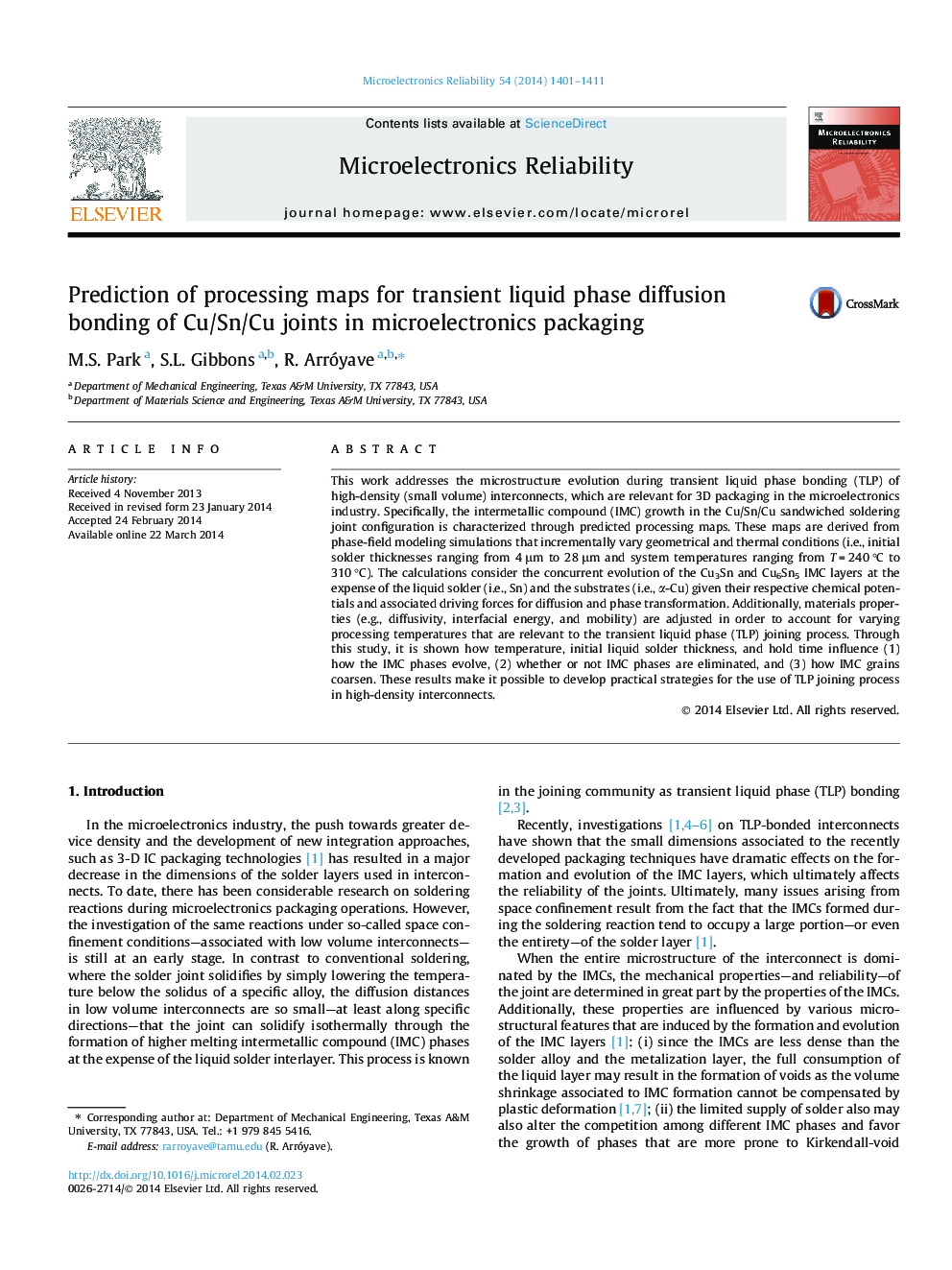| Article ID | Journal | Published Year | Pages | File Type |
|---|---|---|---|---|
| 546897 | Microelectronics Reliability | 2014 | 11 Pages |
•Growth and evolution of IMC layers in Cu/Sn/Cu structures are visualized.•IMC phase elimination rates are obtained according to temperature and Sn thickness.•Cu3Sn grows under diffusion-controlled mechanism before the exhaustion of Sn.•The evolution of interconnect interface reveal more sensitive to Sn thickness.
This work addresses the microstructure evolution during transient liquid phase bonding (TLP) of high-density (small volume) interconnects, which are relevant for 3D packaging in the microelectronics industry. Specifically, the intermetallic compound (IMC) growth in the Cu/Sn/Cu sandwiched soldering joint configuration is characterized through predicted processing maps. These maps are derived from phase-field modeling simulations that incrementally vary geometrical and thermal conditions (i.e., initial solder thicknesses ranging from 4 μm to 28 μm and system temperatures ranging from T = 240 °C to 310 °C). The calculations consider the concurrent evolution of the Cu3Sn and Cu6Sn5 IMC layers at the expense of the liquid solder (i.e., Sn) and the substrates (i.e., αα-Cu) given their respective chemical potentials and associated driving forces for diffusion and phase transformation. Additionally, materials properties (e.g., diffusivity, interfacial energy, and mobility) are adjusted in order to account for varying processing temperatures that are relevant to the transient liquid phase (TLP) joining process. Through this study, it is shown how temperature, initial liquid solder thickness, and hold time influence (1) how the IMC phases evolve, (2) whether or not IMC phases are eliminated, and (3) how IMC grains coarsen. These results make it possible to develop practical strategies for the use of TLP joining process in high-density interconnects.
